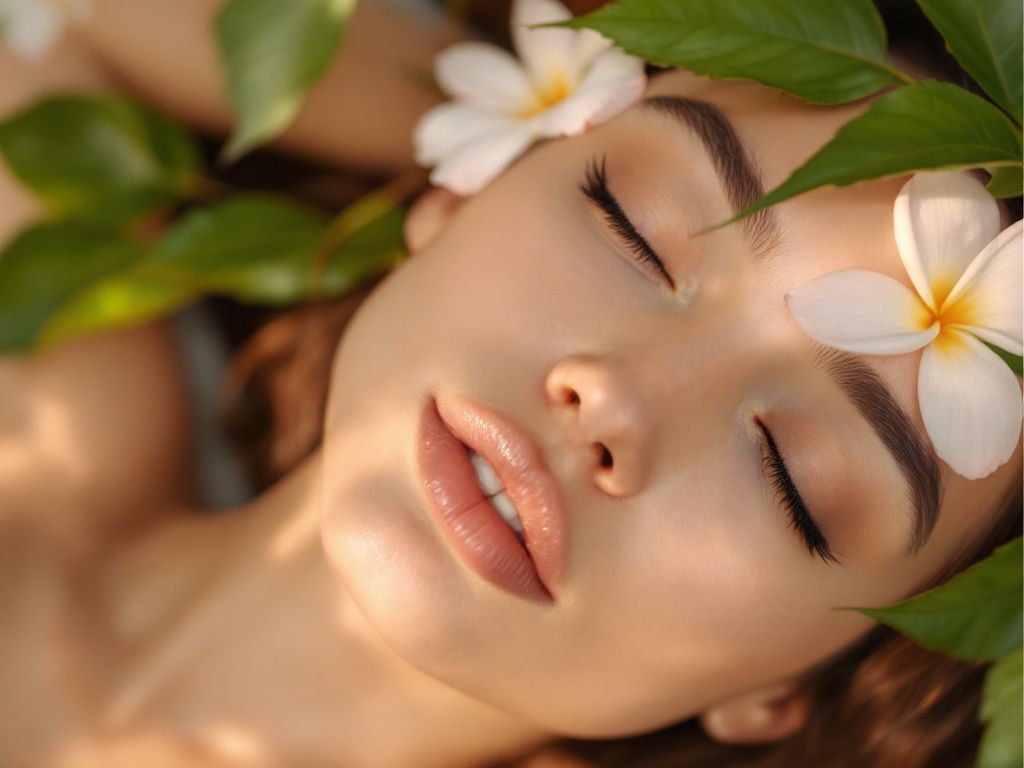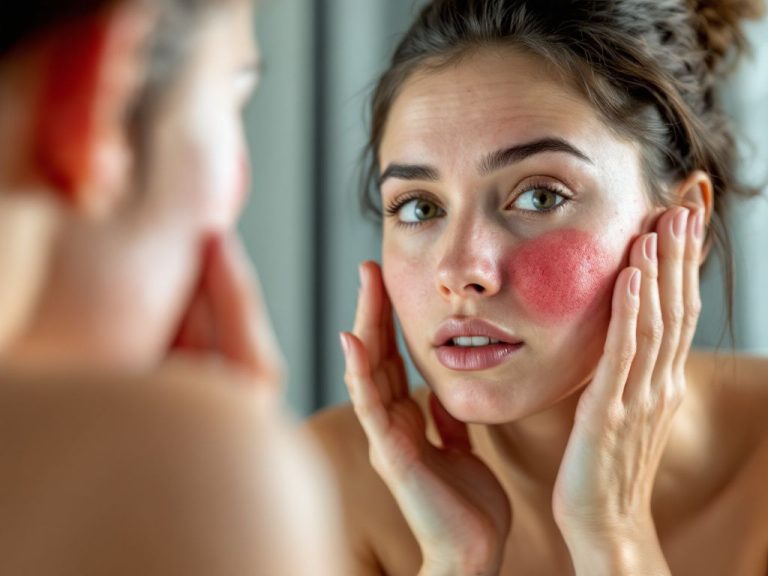Have you ever tried a new skincare product only to see your face break out like it never has before? It’s a moment that’s all too familiar and, let me tell you, it’s not something anyone enjoys. You’re probably asking yourself, “Is this supposed to happen?” Well, trust me, you’re not the first person to wonder if irritation and breakouts are a normal part of trying out new products. When your skin’s acting up, it might just be undergoing what’s known as “skin purging.” So, let’s jump in and untangle this complex topic together.
Table of Contents
ToggleWhat is Skin Purging Anyway?
Alright, so here’s the lowdown: skin purging is the process where your skin starts turning over new cells faster than usual. It’s caused by ingredients like retinoids or alpha hydroxy acids (AHAs), which speed up cell turnover. What happens is that underlying issues are brought to the surface quicker, and yep, it can cause breakouts, whiteheads, and sometimes even redness. It might feel annoying, but it’s actually your skin adapting.
Purging isn’t just any breakout. It’s part of the treatment reaction where your skin is adjusting to the miracle in a bottle you just bought. Imagine it as your skin getting used to a new room temperature after the heater kicks in; it’s uncomfortable at first, but eventually, it becomes the new normal.
Recognizing the Signs of a Skin Purge
So, you might be asking, “How do I know if my sudden breakout is normal skin adaptation or just a plain old breakout?” Fair question. Here’s what to watch for:
- Timing: If the breakout begins within a week or two of starting a new product containing active ingredients, that’s a sign.
- Location: Does it match where you usually have breakouts? Purging tends to happen where you’ve previously experienced blackheads or acne.
- Duration: Purging typically should clear up within 4 to 6 weeks. Longer than that? You might be dealing with a product that’s not right for your skin type.
Why Some Products Cause Purging

Here’s a quick peek under the hood at why some ingredients sound the purge alarm:
- Retinoids: They’re wonder ingredients! Fantastic for anti-aging because they increase cell turnover. But that faster cell turnover can bring inner issues to light.
- Acids like AHAs and BHAs: Excellent exfoliants that dive deep into your pores to clear them out. However, they can push all the hidden gunk up and out first.
- Benzoyl Peroxide: Kills acne-causing bacteria but might create a temporary stage of breakout. Stick with it, though—it usually gets much better once your skin adjusts.
Navigating Through a Skin Purge
So, what can you do when you suspect you’re experiencing a skin purge? It’s all about patience and observant care:
- Stick to the Routine: As long as you’re sure it’s purging and not a negative reaction, continue using the product as directed, but don’t overdo it! Give your skin time to settle.
- Introduce Products Gradually: Start slow with new potent ingredients. You might want to begin with less frequent use, like every other day. It eases your skin into it…
- Hydrate and Protect: Moisturizing can help soothe any irritation, and sunscreen is a must—purging skin may be more sensitive to the sun.
Differentiating Between Purging and Bad Reactions
Don’t rush to toss products aside just because of initial bumps. It’s vital to differentiate purging from reactions that imply you should stop using the product:
- If you get **rash-like red patches, severe swelling, or itchiness, then we need to talk. That’s your skin waving a red flag, saying, “Nope, not for me!”
- Unlike mild purging, reactions can get worse over time instead of improving.
When Purging Becomes a Concern

Usually, purging subsides, and you start seeing skin improvements. But if things aren’t getting better, here’s when to reconsider:
- Extended Breakouts: Withdraw if improvement isn’t evident after a couple of months.
- Increased Irritation: An unusual reaction if your skin is excessively dry or peeling beyond normal adaptation. This might mean consulting a dermatologist for better guidance.
Decoding Treatment Reactions vs. Purging
A quick run-down, rolled up for when you need it on-the-go:
- Treatment Reactions are immediate, tending to result in redness, burning, or a rash.
- Skin Purging involves breakouts that may clear out and improve over time.
Keep this reference handy whenever you’re starting something new:
| **Characteristic** | **Skin Purging** | **Adverse Reaction** |
|---|---|---|
| Time | Starts a week after use | Immediately upon use |
| Symptom Duration | Resolves in weeks (4-6) | Persists or worsens |
| Product Cycle | Ingredients boosting turnover | Any irritant or sensitivity |
| Focus Areas | Previous problem spots | Unusual new zones |
Smart Transition to New Routines

Changing your skincare? Give it a fair trial:
- Research Products: Understand what you’re using—active ingredients are key!
- Patch-Test: Especially important for sensitive skin. Try the product on a small area before doing a full-face plunge.
- Consistency: Regular routines with controlled applications avoid unnecessary confusion. Sometimes that ‘improvement’ can be sporadic—one step forward, two steps back kind of situation.
How to Talk to a Dermatologist
If you ever feel lost in this maze of skincare adaptation, talking with a dermatologist can save time and stress. They’re the pros and can offer insights beyond over-the-counter knowledge, suggesting tailored advice for achieving those skin goals without the worry of extensive trial and error.
Closing Thoughts on Skin Purging
The road to happy skin is sometimes peppered with these unexpected detours caused by purging. It’s troublesome initially, but remember, that slight road bump could be all part of a treatment process destined for clearer, healthier skin. Trust yourself, be patient with your skin, and give it time to find its rhythm. Stay informed, and before long, your complexion will likely rebound better than before.
Your skin is tough—but so are you. So if you’ve got the patience, know that there’s probably a glow waiting for you on the other side of the purge. Your gradual adaptations eventually pave the way for that smooth ride through skincare you’ve been looking for. Keep faith, and keep glowing!
Frequently Asked Questions
What is skin purging?
Skin purging is a process where the skin accelerates its natural cell turnover and shedding, often caused by the introduction of potent skincare ingredients like retinoids, alpha-hydroxy acids (AHAs), or beta-hydroxy acids (BHAs). This can lead to an increase in breakouts, blackheads, or whiteheads as underlying impurities are brought to the surface[1][4][5).
How long does skin purging last?
Skin purging typically lasts between 2 to 6 weeks, depending on individual skin sensitivity and the specific products used. The full benefits of the purging process may not be visible until after this period[2][3][5).
How can I manage skin purging?
To manage skin purging, stick to your skincare routine, use gentle, sulfate-free cleansers, and hydrating moisturizers. Avoid introducing new products, reduce exfoliation frequency, and use sunscreen to protect your skin. For severe cases, consider using cold compresses or over-the-counter hydrocortisone cream[1][2][5).
How can I differentiate between skin purging and a regular breakout?
Skin purging typically involves a consistent pattern of blemishes across the skin, whereas regular breakouts tend to be more localized. Purging usually occurs in areas where you typically break out and resolves within a few weeks, unlike regular breakouts which can be more prolonged[1][3][5).
References







